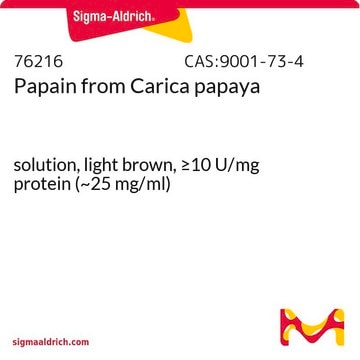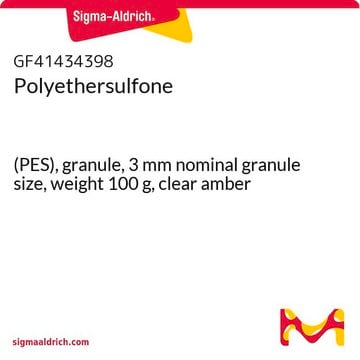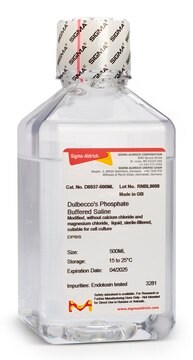Kluczowe dokumenty
W4128
Williams′ Medium E
With sodium bicarbonate, without ʟ-glutamine, liquid, sterile-filtered, suitable for cell culture
Synonim(y):
Williams’ E medium
Wybierz wielkość
268,00 zł
Wybierz wielkość
About This Item
268,00 zł
Polecane produkty
Nazwa produktu
Williams′ Medium E, With sodium bicarbonate, without L-glutamine, liquid, sterile-filtered, suitable for cell culture
Poziom jakości
sterylność
sterile-filtered
Formularz
liquid
metody
cell culture | mammalian: suitable
zanieczyszczenia
endotoxin, tested
komponenty
L-glutamine: no
phenol red: 0.0107 g/L
glucose: 2.0 g/L (Dextro)
NaHCO3: 2.2 g/L
Warunki transportu
ambient
temp. przechowywania
2-8°C
Opis ogólny
Zastosowanie
Rekonstytucja
najczęściej kupowane z tym produktem
Kod klasy składowania
12 - Non Combustible Liquids
Klasa zagrożenia wodnego (WGK)
WGK 1
Temperatura zapłonu (°F)
Not applicable
Temperatura zapłonu (°C)
Not applicable
Wybierz jedną z najnowszych wersji:
Masz już ten produkt?
Dokumenty związane z niedawno zakupionymi produktami zostały zamieszczone w Bibliotece dokumentów.
Klienci oglądali również te produkty
Active Filters
Nasz zespół naukowców ma doświadczenie we wszystkich obszarach badań, w tym w naukach przyrodniczych, materiałoznawstwie, syntezie chemicznej, chromatografii, analityce i wielu innych dziedzinach.
Skontaktuj się z zespołem ds. pomocy technicznej










